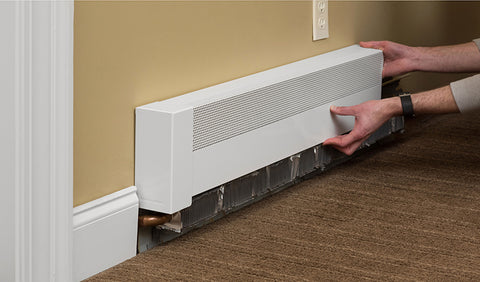The Real Cost of Baseboard Heater Covers

Time for a true price comparison. Baseboarders vs the competition. Aesthetically few would argue that Baseboarders have any competitors at all. But for those carefully monitoring their renovation dollars, here's how the numbers shake out.
"Dummy" Covers
Dummy covers were the only option to update baseboard heaters for too many years. They are kits that include a new front and back panel and sometimes end caps. They are called dummy because they don't include the actual heating bits, just cosmetic. You can buy them at big box stores fairly cheap. However, they can be very expensive, time and money, to install.
Here's the rundown.
- Retail price per linear foot (big box stores) - $9
- Time needed to replace the old covers - Minimum 20 minutes per foot. This involves removal, patching the wall and then installing the new ones.
- Average hourly labor rate for semi-skilled labor in the US northeast - $50
Dummy cover solution total cost: $25.67 per linear foot installed.
Easy Slip-on Baseboarders—A Better Way
- Retail price per linear foot - $23
- Time needed to install Baseboarders - About 30 seconds per foot.
This involves removing the existing endcaps and front plate then dropping the Baseboarders into place.
- DIY installation - $0
Baseboarders easy slip-on solution total cost: $23 per linear foot installed.
Bottomline
Still unsure about which is right for you? You have to look more broadly than the price.
1.) Dummy cover installation requires tools and a level of skill that the vast majority of end-users will not possess. As a result they will opt to contract skilled or semi-skilled labor.
2.) Dummy covers require that every part of the original cover is removed. This can sometimes mean the hydronic system has to be drained. Such a maneuver would significantly add to the labor cost, but I have chosen to assume this procedure is not necessary for most renovation projects.
3.) One of the most misunderstood aspects of the dummy cover renovation solution is the difficulties associated with changing out numerous bits of sheet metal that were never intended to be replaced. Nailing the back plate to the wall was a great way to ensure they'd only be coming off if a saw blade could get between the back of the heater and the sheetrock. It's not an easy job.
It's not only about price. It's also about time and difficulty. Take both into account before you make a choice based on price alone.
